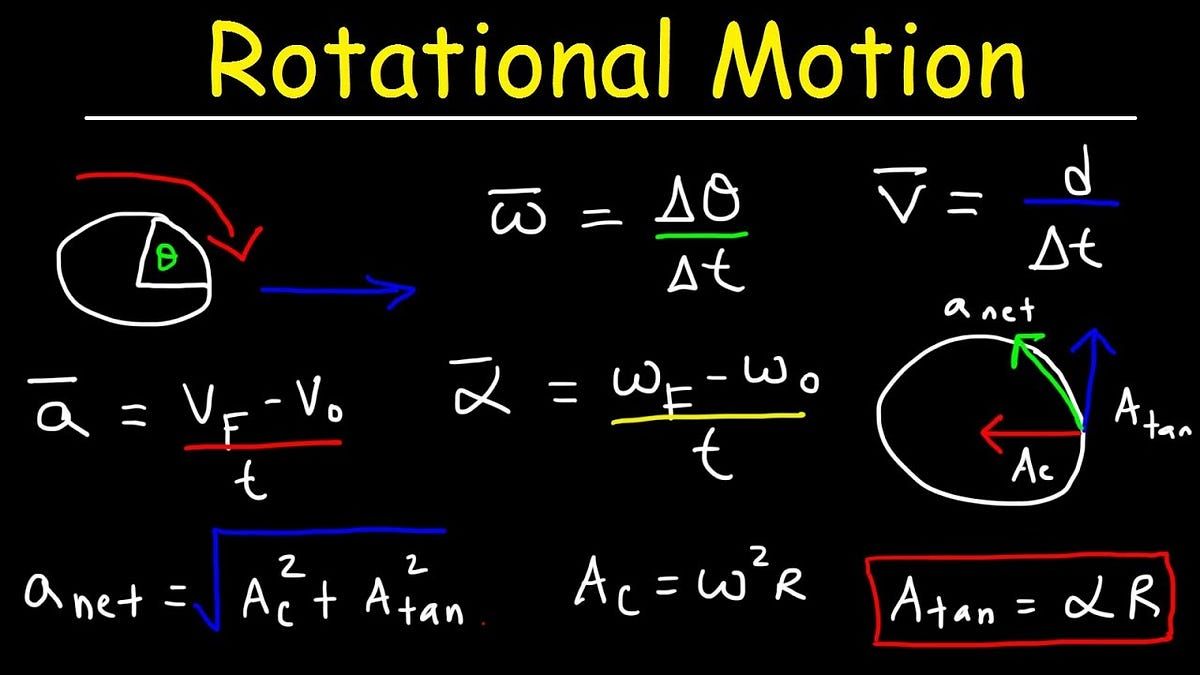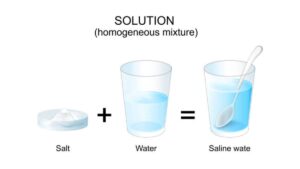The National Eligibility cum Entrance Test is a national level entrance examination conducted as process for selecting students for admission into various medical courses like MBBS, BDS, etc. All the aspirants who are currently studying in class 12th or preparing for the NEET 2026 exam must now start studying the key concepts and topics mentioned in the NEET Syllabus 2026. One of the key chapters that is part of the NEET Physics Syllabus 2026 is the Rotational Motion. All the students can get this chapter in the 11th-class syllabus of the Physics subject and start preparing for the exam. In the article below, we have added the NEET Physics MCQs for Rotational Motion Chapter to assist aspirants in their exam preparations.
NEET Physics MCQs for Rotational Motion Chapter
Rotational motion is a significant chapter in the NEET Physics syllabus, covering essential concepts that test a student’s understanding of mechanics. To master this chapter and perform well in NEET, practicing multiple-choice questions (MCQs) is crucial. The students in this chapter are taught about various important topics like dynamics of rotating bodies, covering topics like moment of inertia, angular momentum and its conservation, torque, rotational kinetic energy, and rolling motion. Practicing for these topics using the NEET Physics MCQs for Rotational Motion Chapter guides students in multiple ways and helps them boost their confidence going into the exam.
Key Concepts in Rotational Motion
Rotational motion refers to the motion of an object around a fixed point or axis. Unlike linear motion, which involves the movement of objects in a straight line, rotational motion involves the rotation of objects in circular paths. In the context of NEET, students must understand both the kinematic and dynamic aspects of rotational motion, as well as the various formulas and principles associated with it.
- Angular Displacement, Velocity, and Acceleration: Just like linear motion, rotational motion has its own set of kinematic quantities, including angular displacement, angular velocity, and angular acceleration.
- Moment of Inertia (I): This is the rotational analog of mass and is a crucial quantity in understanding the dynamics of rotating bodies.
- Torque (τ): The rotational equivalent of force, torque determines how much an object will rotate in response to an applied force.
- Work and Energy in Rotational Motion: Rotational kinetic energy, work done by torque, and the relationship between linear and rotational energy are all integral to understanding the conservation of energy in rotational systems.
- Angular Momentum (L): Just as linear momentum is the product of mass and velocity, angular momentum is the product of moment of inertia and angular velocity. The conservation of angular momentum plays a significant role in rotational motion.
Importance of Rotational Motion for NEET
Rotational motion forms a foundational aspect of the NEET Physics syllabus. It is important for students not only because it contributes directly to the overall score but also because it is essential for understanding advanced topics like rigid body dynamics and oscillations. A strong understanding of all the important topics will help students easily solve problems related to:
- Rigid body dynamics
- Angular momentum conservation
- Torque and rotational energy
- Rotational kinematics
- Work-energy principles
Going by the importance of Rotational Motion Chapter in the NEET Physics section, all the aspirants must try to solve as many MCQs as they can and ensure that they are regularly solving these MCQs to improve their exam performance.
NEET Physics MCQs for Rotational Motion Chapter
Below are a set of NEET Physics MCQs designed to test your understanding of the rotational motion chapter. Check the questions and try to get right answers of each of them:
1. Which of the following is the unit of angular momentum in SI?
-
A) kg·m/s
-
B) kg·m²/s
-
C) kg·m/s²
-
D) m/s²
Answer: B) kg·m²/s
Explanation: Angular momentum is given by the product of moment of inertia and angular velocity. The unit of moment of inertia is kg·m², and the unit of angular velocity is rad/s. Thus, the unit of angular momentum is kg·m²/s.
2. What is the moment of inertia of a solid sphere of mass M and radius R about an axis passing through its center of mass?
-
A) (1/2) MR²
-
B) (2/5) MR²
-
C) (1/3) MR²
-
D) (1/4) MR²
Answer: B) (2/5) MR²
Explanation: The moment of inertia of a solid sphere about its center of mass is given by the formula
.
3. A body is rotating with an angular velocity ω. If the moment of inertia of the body is I, what is the rotational kinetic energy of the body?
-
A)
-
B)
-
C)
-
D)
Answer: A)
Explanation: The rotational kinetic energy is given by the formula
, where I is the moment of inertia and ω is the angular velocity.
4. The torque acting on a body is 5 N·m and the angular acceleration is 2 rad/s². What is the moment of inertia of the body?
-
A) 10 kg·m²
-
B) 2.5 kg·m²
-
C) 7.5 kg·m²
-
D) 12 kg·m²
Answer: B) 2.5 kg·m²
Explanation: From Newton’s second law for rotation,
, where τ is the torque, I is the moment of inertia, and α is the angular acceleration. Rearranging the formula, we get
kg·m².
5. Which of the following statements is true for a rotating object when no external torque is applied?
-
A) The angular velocity increases continuously.
-
B) The angular momentum is conserved.
-
C) The object stops rotating.
-
D) The moment of inertia decreases.
Answer: B) The angular momentum is conserved.
Explanation: According to the conservation of angular momentum, when no external torque is applied, the angular momentum of a rotating body remains constant.
6. A flywheel initially at rest attains an angular velocity of 20 rad/s in 5 seconds. If the moment of inertia of the flywheel is 10 kg·m², what is the applied torque?
-
A) 40 N·m
-
B) 100 N·m
-
C) 200 N·m
-
D) 50 N·m
Answer: A) 40 N·m
Explanation: The angular acceleration
rad/s². Using the formula
, we get
N·m.
7. What is the angular velocity of a wheel of radius 0.5 m if a point on its circumference travels with a linear velocity of 10 m/s?
-
A) 10 rad/s
-
B) 5 rad/s
-
C) 20 rad/s
-
D) 25 rad/s
Answer: B) 20 rad/s
Explanation: The relationship between linear velocity (v) and angular velocity (ω) is given by
. Substituting the given values, we get
rad/s.
8. What happens to the moment of inertia when the radius of a rotating object is doubled?
-
A) It doubles.
-
B) It becomes four times greater.
-
C) It becomes half.
-
D) It becomes eight times greater.
Answer: B) It becomes four times greater.
Explanation: The moment of inertia for a point mass is given by
. If the radius is doubled, the moment of inertia increases by a factor of 4, as
.
9. Which of the following is the dimension of torque?
-
A) [M][L][T]⁻²
-
B) [M][L]²[T]⁻²
-
C) [M][L]²[T]⁻³
-
D) [M][L]²[T]⁻¹
Answer: B) [M][L]²[T]⁻²
Explanation: Torque is the product of force and radius, and its dimension is the same as that of force multiplied by distance. Force has the dimension [M][L][T]⁻², so torque has the dimension [M][L]²[T]⁻².
10. A solid disk and a hoop have the same mass and radius. Which of the following will have a greater moment of inertia?
-
A) The disk
-
B) The hoop
-
C) Both will have the same moment of inertia
-
D) The disk depends on angular velocity
Answer: B) The hoop
Explanation: The moment of inertia of a solid disk is
, while for a hoop it is
. Since
, the hoop has a greater moment of inertia.
Year Wise NEET Physics MCQs for Rotational Motion Chapter
In the table listed below, we have added the year wise NEET Physics MCQs for Rotational Motion Chapter so that all the students can start preparing accordingly. Click on the links below:
| Year Wise NEET Physics MCQs for Rotational Motion Chapter | |
| Year | Links |
| 2014 | Click Here |
| 2015 | Click Here |
| 2016 | Click Here |
| 2017 | Click Here |
| 2018 | Click Here |
| NEET Physics Chapters | MCQ Link |
|---|---|
| Physics and Measurement | Click Here |
| Kinematics | Click Here |
| Laws of Motion | Click Here |
| Work, Energy, and Power | Click Here |
| Rotational Motion | Click Here |
| Gravitation | Click Here |
| Properties of Solids and Liquids | Click Here |
| Thermodynamics | Click Here |
| Kinetic Theory of Gases | Click Here |
| Oscillation and Waves | Click Here |
| Electrostatics | Click Here |
| Current Electricity | Click Here |
| Magnetic Effects of Current and Magnetism | Click Here |
| Electromagnetic Induction and Alternating Currents | Click Here |










 NEET Preparation Strategy 2026: Detailed...
NEET Preparation Strategy 2026: Detailed...
 Free NEET Sample Papers 2026 PDF | Downl...
Free NEET Sample Papers 2026 PDF | Downl...
 Salt Analysis NEET Notes, Check Importan...
Salt Analysis NEET Notes, Check Importan...








